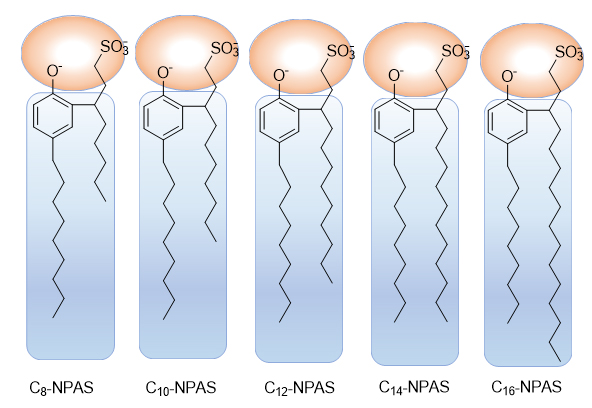[1] He, X. B.; Guvench, O.; Mackerell Jr., A. D.; Klein, M. L. J. Phys. Chem. B 2010, 114, 9787.
[2] Yu, Y. X.; Zhao, J.; Guvench, O.; Bayly, A. E. Chin. J. Chem. Eng. 2008, 16, 517.
[3] Zhao, W. W.; Wang, Y. L. Acta Chim. Sinica 2019, 77, 717(in Chinese). (赵微微, 王毅琳, 化学学报, 2019, 77, 717.)
[4] Yan, H.; Guo, X. L.; Liu, C. B.; Yuan, S. L. Langmuir 2011, 27, 5762.
[5] Lin, C.; Pan, R. M.; Xing, P. Chin. J. Org. Chem. 2018, 38, 3260(in Chinese). (林超, 潘仁明, 邢萍, 有机化学, 2018, 38, 3260.)
[6] Zhao, Y.; Wang, C.; Chow, A. H.; Ren, K.; Gong, T.; Zhang, Z. R.; Zheng, Y. Int. J. Pharm. B 2010, 383, 170.
[7] Liao, G. Z.; Wang, Q.; Wang, H. Z.; Liu, W. D.; Wang, Z. M. Acta Petrolei Sinica 2017, 38, 196(in Chinese). (廖广志, 王强, 王红庄, 刘卫东, 王正茂, 石油学报, 2017, 38, 196.)
[8] Yu, T.; Liu, H. J.; Ding, W. Chin. J. Appl. Chem. 2008, 25, 1107(in Chinese). (于涛, 刘红娟, 丁伟, 应用化学, 2008, 25, 1107.)
[9] Chen, X. M.; Chen, Y.; Liu, Y. Chin. J. Chem. 2018, 36, 526.
[10] Li, H. F.; Qiao, F. L.; Fan, Y. X.; Wang, Y. L. Acta Chim. Sinica 2018, 76, 564(in Chinese). (李浩飞, 乔富林, 范雅珣, 王毅琳, 化学学报, 2018, 76, 564.)
[11] Li, M.; Zhang, C.; Yang, X. Chin. J. Chem. 2017, 35, 1706.
[12] Li, Z. Q.; Guo, X. L.; Wang, H. Y.; Li, Q. H.; Yuan, S. L. Acta Phys.-Chim. Sin. 2009, 25, 6(in Chinese). (李振泉, 郭新利, 王红艳, 李青华, 苑世领, 物理化学学报, 2009, 25, 6.)
[13] Jang, S. S.; Lin, S. T.; Maiti, P. K.; Blanco, M.; Goddard, W. A.; Shuler, P. J. Phys. Chem. B 2004, 108, 12130.
[14] Sun, H. Q.; Xiao, H. Y.; Liu, X. H. Sci. Chin. Chem. 2011, 54, 1078(in Chinese). (孙唤泉, 肖红艳, 刘新厚, 中国科学:化学, 2011, 54, 1078.)
[15] Shi, J.; Lv, K.; Yuan, S. L. J. Shandong Univ. (Engineering Science) 2012, 42, 77(in Chinese). (石静, 吕凯, 苑世领, 山东大学学报:工学版, 2012, 42, 77.)
[16] Wang, Y. F.; Yu, W. Z.; Hu, S. Q. J. Chin. Univ. Petro. 2011, 35, 153(in Chinese). (王业飞, 于维钊, 胡松青, 中国石油大学学报, 2011, 35, 153.)
[17] Niu, R. X.; Wang, D. Q.; Wang, J. L.; Wang, C.; Song, H. J. Chem. Ind. Eng. 2016, 67, 2944(in Chinese). (牛瑞霞, 王大强, 王敬玲, 王超, 宋华, 化工学报, 2016, 67, 2944.)
[18] Tan, J. S.; Zhang, L.; Lim, F. C.; Cheong, D. W. Langmuir 2017, 33, 4461.
[19] Martínez, L.; Andrade, R.; Birgin, E. G. J. Comput. Chem. 2009, 30, 2157.
[20] Lundborg, M.; Lindahl, E. J. Phys. Chem. B 2014, 119, 810.
[21] Wang, J.; Wolf, R. M.; Caldwell, J. W.; Kollman, P. A.; Case, D. A. J. Comp. Chem. 2004, 25, 1157.
[22] Sastry, N. V.; Valand, M. K. J. Chem. Thermodyn. 1998, 30, 929.
[23] Pai, Y. H.; Chen, L. J. J. Chem. Eng. Data 1998, 43, 665.
[24] Hou, M. D.; Li, H. P.; Hu, Z. Z.; Song, H. W. China Surfactant Detergent & Cosmetics 2018, 48, 243(in Chinese). (候孟蝶, 李惠萍, 胡子昭, 宋宏伟, 日用化学工业, 2018, 48, 243.)
[25] Hu, X. Y.; Song, X. W.; Li, Q. W.; He, X. J.; Li, Y. Acta Chim. Sinica 2009, 67, 1691(in Chinese). (胡晓莹, 宋新旺, 李全伟, 何秀娟, 李英, 化学学报, 2009, 67, 1691.)
[26] Olayiwola, S. O.; Dejam, M. Fuel 2019, 241, 1045.
[27] Jiang, R. J.; Luo, J. H.; Bai, R. B.; Jiang, B.; Zhou, G. Chem. J. Chin. Univ. 2017, 38, 1804(in Chinese). (江蓉君, 罗健辉, 白瑞兵, 江波, 周歌, 高等学校化学学报, 2017, 38, 1804.)
[28] Zeppieri, S.; Rodriguez, J.; López, R. A. J. Chem. Eng. Data 2001, 46, 1086.
[29] Wang, J.; Wang, J. X.; Zeng, F. G.; Wu, X. L. Acta Chim. Sinica 2010, 68, 1653(in Chinese). (王进, 王军霞, 曾凡桂, 吴秀玲, 化学学报, 2010, 68, 1653.)
[30] Liu, M. T.; Pu, M. F.; Ma, H. W. Chem. J. Chin. Univ. 2012, 33, 1319(in Chinese). (刘梅堂, 浦敏锋, 马鸿文, 高等学校化学学报, 2012, 33, 1319.)
[31] Liu, Z. Y.; Liao, Q.; Jin, Z. Q.; Zhang, L.; Zhang, L. Acta Phys.-Chim. Sinica 2016, 32, 1168(in Chinese). (刘子瑜, 廖琦, 靳志强, 张磊, 张路, 物理化学学报, 2016, 32, 1168.)


